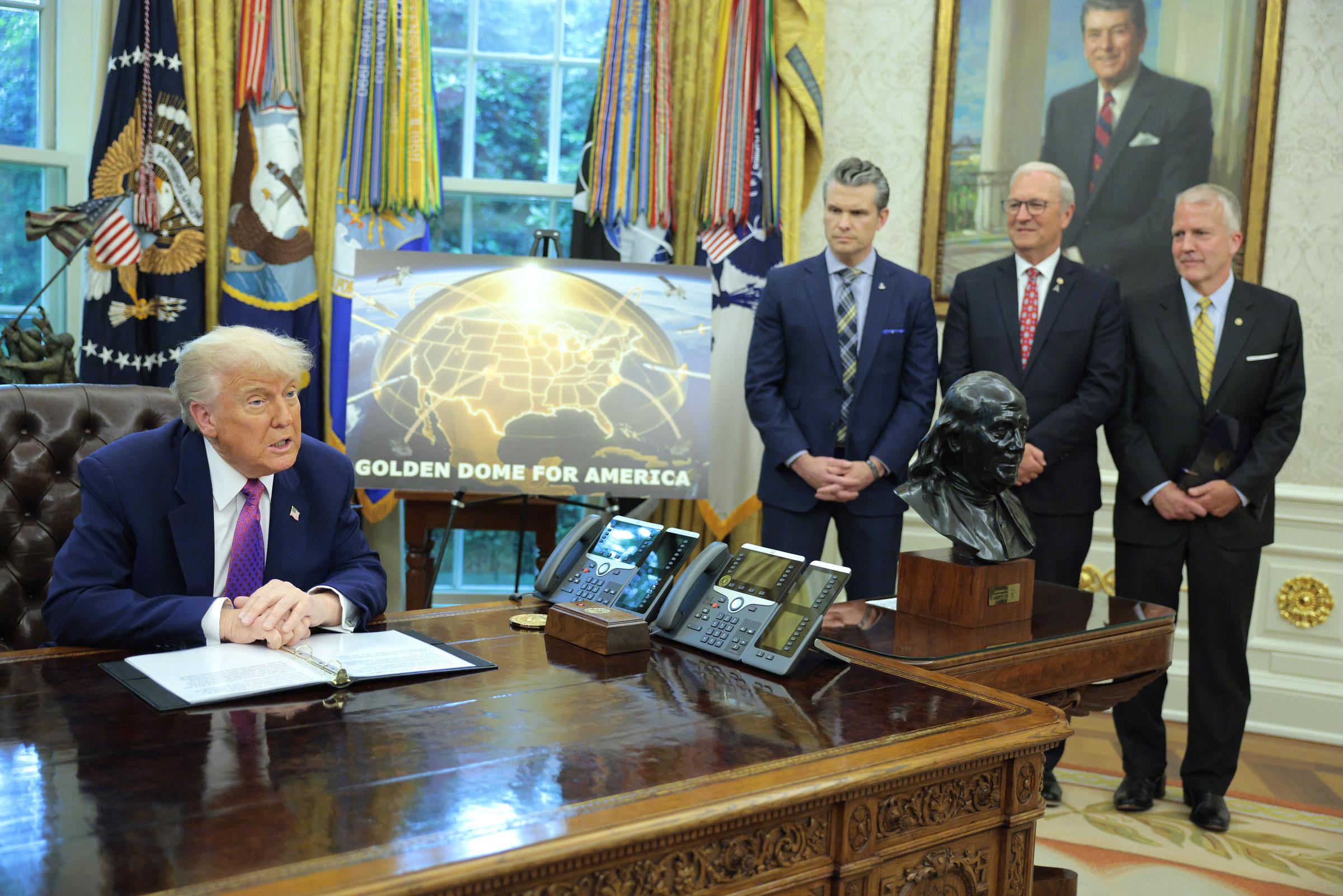A Bold Shift in Defense Strategy
Talks in Washington accelerated after a single proposal broke away from the usual defense script. The new plan calls for hundreds of unarmed satellites. As details emerge, foreign leaders warn the consequences could stretch far beyond national defense.
Trump Unveils the Golden Dome
President Donald Trump has captured global attention with his announcement of the “Golden Dome”—a $175 billion missile defense system. The project combines cutting-edge tech with an unprecedented scale in U.S. defense history. Though still early in development, it’s already drawing sharp international scrutiny.
Foreign Reactions and Rapid Momentum
While U.S. contractors race to secure roles, foreign governments—especially China—are sounding the alarm. China labeled the project “destabilizing and provocative.” Yet, with support from private firms, military officials, and political allies, the concept is quickly turning into a tangible plan.
Inspired by Iron Dome, Fueled by Reagan-Era Dreams
Trump first pitched the Golden Dome during a March 2025 address to Congress. He praised Israel’s Iron Dome and insisted the U.S. deserves similar protection. Referencing Ronald Reagan’s 1980s “Star Wars” initiative, Trump said technology had finally caught up with vision.
“They Loved the Idea, Sir”
In May 2025, speaking from the Oval Office alongside Defense Secretary Pete Hegseth, Trump emphasized that the concept was his own. “I suggested it, and they all said, ‘We love the idea, sir,’” he recalled. The administration quickly selected a design and laid out a layered defense approach across land, sea, and space.
Operational Timeline and Goals
Trump vows the system will be operational by the end of his term in January 2029. The Golden Dome aims to intercept a range of missile threats with “next-generation technologies,” including space-based sensors and interceptors.
Multi-Layered Protection Strategy
The system is designed to detect and destroy missiles in all stages—before launch, mid-flight, and just before impact. General Gregory Guillot of U.S. Northern Command outlined three layers: domain awareness, ICBM defeat, and cruise missile defense.
Building the Golden Dome Across States
Construction will start in Alaska, Florida, Georgia, and Indiana. Each site will serve a specific function within the larger defense network. While contractors haven’t been finalized, major U.S. defense and tech firms are expected to take lead roles.

President Donald Trump speaks alongside Secretary of Defense Pete Hegseth, Sen. Kevin Cramer (R-ND), and Sen. Dan Sullivan (R-AK) in the Oval Office of the White House on May 20, 2025 | Source: Getty Images
Made in America—but at a Price
Trump insists the system will be built entirely in the U.S. However, the Congressional Budget Office estimates that space-based components alone could cost up to $542 billion—far beyond the initial budget.
Pentagon Defines Requirements, Space Force Takes Lead
Although still conceptual, the Pentagon is shaping requirements. Trump appointed Space Force General Michael Guetlein to oversee the project, signaling urgency and priority.
Silicon Valley Joins the Race
Three companies—SpaceX, Palantir, and Anduril—have emerged as frontrunners. They’ve formed a joint bid to develop key surveillance components, aiming to launch 400 to 1,000 satellites to detect and track missile threats.
Interception in Space
A second fleet of around 200 attack satellites—armed with missiles or lasers—will handle threats in space. However, the SpaceX-led group isn’t expected to manage the weaponized portion.
Political Ties and Financial Backing
All three firms are backed by Trump-aligned entrepreneurs. Elon Musk, who donated over $250 million to Trump’s campaigns, currently serves as a special adviser. Recently, representatives from the trio met with Pentagon and White House officials to pitch their proposal.
The Broader Threat Landscape
A new Defense Intelligence Agency report warns that missile threats will grow in both number and sophistication by 2035. The report identifies China, Russia, North Korea, and Iran as key adversaries, all advancing missile technologies capable of reaching the U.S.
Rising Sophistication of Global Threats
Ballistic missiles remain the top threat, but others—like hypersonic weapons, cruise missiles, and fractional orbital systems—are quickly emerging. China and Russia are actively developing these advanced capabilities.
North Korea and Iran in Focus
North Korea has already tested missiles that can hit the U.S. mainland. Iran hasn’t yet fielded ICBMs, but the DIA believes it could build up to 60 by 2035. Iran’s space launch vehicles could serve as a foundation for future missile development.
The Future of Missile Defense
Fractional orbital bombardment systems represent a new frontier in threat detection and defense. As these weapons evolve, the Golden Dome project seeks to outpace them with innovation and speed.





